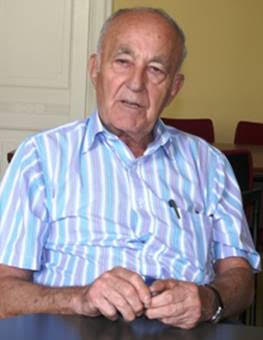
THE VOICE OF INTERNATIONAL LITHUANIA
|
VilNews has its own Google archive! Type a word in the above search box to find any article.
You can also follow us on Facebook. We have two different pages. Click to open and join.
|
Featured black
- Posted by - (2) Comment
OIL, GAS AND NOW POTENTIALLY 3 NEW
NUCLEAR PLANTS IN THE BALTIC AREA:
Ticking time bombs?

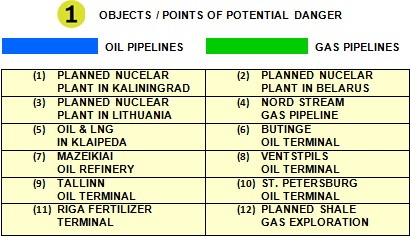
Text: Aage Myhre, Editor-in-Chief
aage.myhre@VilNews.com
It surprises me that the warning bells are not ringing much louder in Scandinavia and the rest of northern Europe, as I presume it now must be well known what is going on here in the Baltic region with regards to old as well as new energy installations, and potential disasters connected to them. Oil, gas and polluting elements from World War II and later have long been known concern factors. Now the situation has become further worrying by the fact that Russia has built an underwater gas pipeline from St. Petersburg to Germany, and not least that it is planned no less than three (!) new nuclear power stations very close to the Baltic Sea's southern shore.
We all remember Chernobyl 25 years ago. We all remember the terrible disasters in Japan earlier this year, in a nation that claimed to have the world’s safest nuclear installations – a claim that showed yet again that nuclear plants will never be safe enough. They are always ticking time bombs.
For the whole time nuclear plants operate they emit radiation to their surroundings, often causing illness and genetic damage to humans, animals and nature. No nuclear installation, wherever it was, has ever been really safe.
I can hardly imagine living in Vilnius any more if that means I will have to live surrounded by three nuclear plants, just kilometres away. In particular, I would be extremely worried about my children and their descendants. Living in a neighbourhood of nuclear reactors is simply not a chance I can take.
Can Europe accept that three nuclear power stations are built right here, at its very ‘epicentre’?

Nuclear technology is a high-risk technology
|
|
A new nuclear power plant, due to be located at Visaginas in eastern Lithuania, has been in the pipeline for several years. Construction costs are expected to be at least three to five billion euros (4.5 to 7.4 billion dollars). |
Human mistakes, natural disasters, material fatigue – nuclear technology is a high-risk technology, on top of which comes the danger emanating from radioactive waste that has to be safely disposed of for a million years. The only thing that is certain is that nothing is safe, which is why I think the plans in Lithuania, Belarus and Kaliningrad should be reconsidered immediately.
A recent report from the U.S. ‘Union of Concerned Scientists’, based on data from the federal Nuclear Regulatory Commission (NRC), contains troubling news also about the state of America’s vast network of nuclear power plants.
The report, which examined serious incidents at 14 U.S. nuclear power plants from New York to California in 2010, found fault with both plant operators and the Nuclear Regulatory Commission which is supposed to oversee them.
“Many of these significant events occurred because reactor owners and even the NRC tolerated known safety problems,” the report stated.
While none of the 14 safety incidents tagged in the Union’s report as ‘near misses’ produced harm to nuclear plant employees or the public, the report terms the frequency of these incidents, which averaged more than one per month, ‘high for a mature industry’.
Nuclear waste

Another fear I have, is that there in Kaliningrad, Belarus and potentially other Baltic regions are a lot of nuclear remains after the Cold War period.
"We are sitting on a powder keg with a fuse that is burning, but we don't know how long that fuse is," said Alexander Nikitin, a former Russian navy officer, now an environmental activist who first revealed the existence of the dump at Andreeva Bay, on the Kola peninsula of north-western Russia.
The nightmare scenario, identified by Russia's Federal Nuclear Agency, raises new fears that Moscow is failing to properly manage the potentially deadly nuclear legacy of the Cold War, which has left the country with tonnes of plutonium and uranium and millions of tonnes of nuclear waste to deal with. That is for Kola, but I am afraid there also here in the Baltic area exist a number of unknown ‘powder kegs’ from those days.
Baltic Sea oil spill may be inevitable

It is well known that the Baltic Sea has a severe water pollution problem. Nations surrounding the sea have been dumping untreated human waste, toxic materials, and metal into the sea since WWII. Countries from the former Soviet Union and the Eastern Bloc gave little regard to the possible damage done from this dumping. Specific waste being dumped into the sea includes factory waste being deposited directly into the sea or rivers which feed directly into the sea. The environmental pollution in the Baltic Sea can cause irreversible damage to the sea which is an important economical and recreational source for 80 million people around its waters.
“Regarding the Baltic Sea, the question should be asked not whether an ecological incident will ever happen [there], but rather when it will happen. Therefore, we all have to get ready for it.” This said Magnus von Schenck, manager of the Swedish project ‘Baltic Master II’, at a conference in Budapest earlier this year.
And he continued: “All Baltic States should prepare special plans aimed at dealing with seemingly inevitable ecological incidents in the Baltic Sea.” He stressed that the Baltic Sea has one of the world’s busiest cargo ship, including oil-transporting tanker traffic. According to the World Nature Fund, crude oil and oil products export volumes have doubled over nearly 15 years in the Baltic Sea, reaching 160 million tons in 2011.
“The Baltic Sea is particularly susceptible to ecological dangers, as it is a closed sea – its waters change slowly. Statistically, yearly we register 120-150 various accidents related to oil spills in the sea, resulting in spills of several hundreds tons of oil products, which makes the sea particularly vulnerable compared with other seas,” Schenck pointed out, according to The Baltic Times.
Potential environmental disasters in Klaipeda, with both LNG and oil terminal in the city?

There are currently 235 liquefied natural gas (LNG) tankers in operation worldwide. New LNG tankers have an average capacity of three billion cubic feet, costing approximately EUR 180 million each. LNG tankers differ from traditional oil tankers in that their cargo, liquefied natural gas, must be cooled to extremely low temperatures (-160°C) and has slightly different characteristics than oil (including a higher propensity to burn). LNG tankers might be dangerous for environments and communities claims a new movie and web page: http://timrileylaw.com/LNG_TANKERS.htm
The Kiaules Nugara (Pig’s back) island in the southern part of the Klaipeda port area, at the border between the port and the Curonian Lagoon is the most likely place to build Lithuania’s planned LNG (Liquid Natural Gas) terminal. This means that it will regularly sail large LNG tankers through the narrow strait between Klaipeda city and Neringa (which is now designated as one of the Lithuania’s national parks). How risky can it be to get a gas terminal and such a heavy sea traffic close to the big city that Klaipeda after all is? What about the explosion and fire risk? What about emissions and other forms of pollution? Is the water, beaches and fisheries in the Curonian Lagoon at risk? May Neringa and Klaipeda city be at risk?
Riga Fertilizer Terminal - a ticking time bomb

BNN (Baltic News Service):
On July 26, 2011, Riga City Council approved establishment of a port terminal «Riga fertilizer terminal» on the island of Kundzinsala for handling and storing mineral fertilizers. Of the terminal’s capacity – 2 million tons per year, ammonium nitrate of all kinds will make up 52% or 1.05 million tons of cargo.
Ammonium nitrate, an extremely explosive and fire hazardous product, is widely used for terrorist purposes. It was also used by terrorists for the bombings in the United States, Britain, Spain, Norway, Turkey, Afghanistan, India, Middle East, Russia and other countries. It is exactly for this reason why many states have taken drastic measures to limit the amount of ammonium nitrate located in their territory. For example, Ireland, China, Colombia, Uzbekistan, Afghanistan, and the Philippines have banned using ammonium nitrate in agriculture.
However, the Riga City Council has agreed to build a terminal for handling and storing ammonium nitrate near terminals operating with petroleum products and liquefied gas. This implies about 4,000 tons of ammonium nitrate will travel by rail via the center of the capital of Latvia each day. It is impossible to guarantee safe transport of these hazardous chemicals along the entire route.
Furthermore, according to the decision of the Riga City Council, «Riga fertilizer terminal» is allowed to store 90,000 tonnes of all kinds of ammonium nitrate. No port in the entire world is allowed to store more than 5 000 tons of this product.
Initiators of the project have been using the mass media to claim that the project is going to be highly beneficial for the city. Moreover, the permission was backed by the conclusion of the State Environmental Supervision Office that the terminal will not be dangerous for the environment or the health and life of Riga residents.
Independent experts in the field of ports operations, environmental protection, life safety and terrorism express reasonable doubt on the integrity and objectivity of the Riga City Council decision. Experts give strong arguments why various stages of «Riga fertilizer terminal» construction project agreement lack transparency and formal public debate. The company has misled about the exceptional economic benefit to the city and the matter of the country handling and storing ammonium nitrate is highly questionable. Most importantly, the project conceals what mortal danger it poses to the inhabitants of Riga.
If people do not pay close attention to this disastrous decision taken on July 26, 2011, by Riga City Council, the capital of Latvia will turn into a ticking time bomb.
Shale gas: Energy security laced with possible ecological calamity

Poland and Lithuania are these days about to make their first moves towards exploration and production of shale gas. How dangerous may such exploration and production be?
Here is what http://www.lloyds.com wrote about shale gas in March 2011:
With the world’s rapid consumption of its finite fossil fuels – and the environmental effect this is having – causing growing alarm, the discovery of vast deposits of cleaner natural gas has been hailed as a potential “energy saviour”.
But the method of reaching this hard-to-extract resource has prompted accusations it damages health and the ecology, prompting a US Government investigation into whether the process is safe.
It has long been known that enormous pools of natural gas are locked in underground rock formations, particularly shale. But with plentiful supplies of oil, gas and coal available it was largely ignored. However, dire warnings about the limited remaining stocks of these fuels and the environmental harm they cause have prompted a rethink.
The shale gas supplies are estimated to be so large that they could satisfy America’s gas needs for the next century. The shale gas boom in America, where it is already providing 10% of the nation’s gas, has led to exploration in China, India, Australia, Indonesia and Europe. The first exploratory well was dug in the UK at the start of this year.
There is enough existing conventional gas to last the world for another 60 years, says the International Energy Agency. But by adding in “unconventional” sources, such as shale gas, reserves could last another 250 years, although it stresses this estimate is very uncertain.
As natural gas has only half the carbon emissions of coal, shale gas could also help in the fight against climate change, by providing a bridge between polluting oil and gas and new renewable energy sources.
Environmental worries
But there are growing concerns that developing these gas reservoirs may cause serious environmental harm. That is because the shale gas boom has been enabled by a technique called hydraulic fracturing, or “fracking”. It involves pumping huge volumes of water, sand and chemicals at high pressures deep underground to break up rock formations and allow the gas to escape into wells from where it can be piped to the surface. Most of the brew of water and cocktails used to extract the gas stays far beneath the earth, however, with uncertain long-term consequences. Campaigners are calling for the technique to be halted until further research can be carried out.
In America, where there are now around 35,000 shale gas wells, there are growing protests over fracking. There have been cases of blowouts and gas leaks while hundreds of residents living close to gas wells in Texas, Wyoming and Pennsylvania have complained the cocktail of chemicals used in the drilling process has polluted their groundwater, causing many illnesses, while farmers blame poisoned well water for deaths and deformities among their cattle.
Energy companies deny that fracking is to blame for contaminated water. The technique has been used for decades but has only become widespread recently since shale gas has been seen as a viable alternative to oil and coal. The drilling companies are exempt from legislation on clean water so can keep the chemicals they use a closely guarded secret.
Action being taken
The US Congress has responded by directing the Environmental Protection Agency (EPA) to study the effects of fracking. In February, the EPA issued a draft plan outlining how it will investigate the issue, including proposals to take water samples from sites before, during and after fracking has taken place. The EPA expects to publish its initial report by the end of 2012, with a further in-depth study due two years later.
But some cities have pre-empted the EPA investigation and taken unilateral action. The cities of Pittsburgh, Pennsylvania and Buffalo in New York have already chosen to ban fracking in their regions. Others have called for a moratorium on the process until more is known about its potential consequences.
Investors have also raised concerns. In 2010, 12 energy firms, including Exxon Mobil, faced shareholder resolutions at their annual meetings calling for them to introduce better safeguards against environmental damage caused by fracking.
Some critics argue the rush to develop shale gas is diverting attention away from the need to find new, clean energy supplies. In January, the Tyndall Centre – a respected climate thinktank – published a report warning of the dangers of developing shale gas. The gas would not be used to substitute coal but, instead, is likely to be used as well as coal to meet the growing demand for energy, it said. Without a tough cap on greenhouse gases, shale gas exploitation could result in an increase – not a decrease – in overall carbon emissions.
Its image as an energy saviour is also likely to sap investment in renewable energy sources, the report added. The Tyndall Centre concluded that the UK and Europe should halt shale gas development until more evidence is gathered in America about the potential harm fracking can cause.
- Bookmark :
- Digg
- del.icio.us
- Stumbleupon
- Redit it
- Posted by - (0) Comment
OIL, GAS AND NOW POTENTIALLY 3 NEW
NUCLEAR PLANTS IN THE BALTIC AREA:
Ticking time bombs?
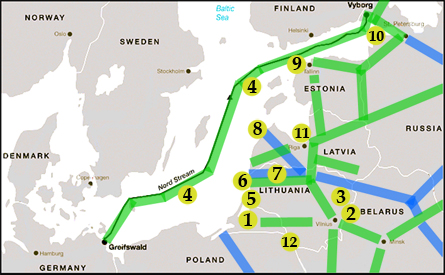
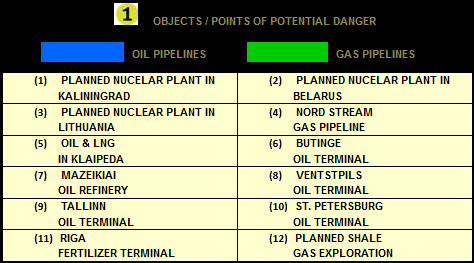
Text: Aage Myhre, Editor-in-Chief
aage.myhre@VilNews.com
It surprises me that the warning bells are not ringing much louder in Scandinavia and the rest of northern Europe, as I presume it now must be well known what is going on here in the Baltic region with regards to old as well as new energy installations, and potential disasters connected to them.
Oil, gas and polluting elements from World War II and later have long been known concern factors. Now the situation has become further worrying by the fact that Russia has built an underwater gas pipeline from St. Petersburg to Germany, and not least that it is planned no less than three (!) new nuclear power stations very close to the Baltic Sea's southern shore.
We all remember Chernobyl 25 years ago. We all remember the terrible disasters in Japan earlier this year, in a nation that claimed to have the world’s safest nuclear installations – a claim that showed yet again that nuclear plants will never be safe enough. They are always ticking time bombs.
For the whole time nuclear plants operate they emit radiation to their surroundings, often causing illness and genetic damage to humans, animals and nature. No nuclear installation, wherever it was, has ever been really safe.
I can hardly imagine living in Vilnius any more if that means I will have to live surrounded by three nuclear plants, just kilometres away. In particular, I would be extremely worried about my children and their descendants. Living in a neighbourhood of nuclear reactors is simply not a chance I can take.
Can Europe accept that three nuclear power stations are built right here, at its very ‘epicentre’?
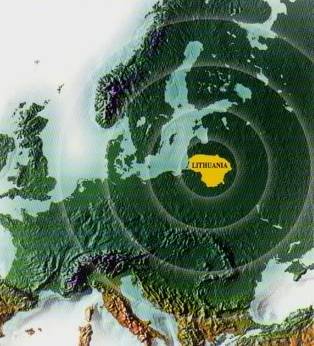
- Bookmark :
- Digg
- del.icio.us
- Stumbleupon
- Redit it
- Posted by - (0) Comment
NOW IN CHICAGO!
National Lithuanian
American Hall of Fame
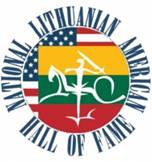
Bringing attention to Lithuania’s epic history and the global contributions of its people today in the arts, sciences, sports, politics, and economics.
Football greats Dick Butkus and Johnny Unitas, film director Robert Zemeckis, screen stars Charles Bronson, Ann Jillian, and Ruta Lee, musicians Benny Goodman and Bob Dylan, author J.D. Salinger, and Senator Dick Durbin are but a few famous individuals with roots in a nation that was once the largest and amongst the most powerful in Europe, Lithuania. Their achievements will now be commemorated by The National Lithuanian-American Hall of Fame (NLAHF).
- Bookmark :
- Digg
- del.icio.us
- Stumbleupon
- Redit it
- Posted by - (2) Comment
NOW IN CHICAGO!
National Lithuanian
American Hall of Fame

Bringing attention to Lithuania’s epic history and the global contributions of its people today in the arts, sciences, sports, politics, and economics.
Football greats Dick Butkus and Johnny Unitas, film director Robert Zemeckis, screen stars Charles Bronson, Ann Jillian, and Ruta Lee, musicians Benny Goodman and Bob Dylan, author J.D. Salinger, and Senator Dick Durbin are but a few famous individuals with roots in a nation that was once the largest and amongst the most powerful in Europe, Lithuania. Their achievements will now be commemorated by The National Lithuanian-American Hall of Fame (NLAHF).
Lithuanians and their history have been living in relative anonymity among the American public, as Lithuania’s voice on the world stage was silenced during a half-century of Soviet Occupation. With independence restored, Lithuania has reasserted its place in the advancement of world culture – a feat recognized by the designation of its capital, Vilnius, as the “Cultural Capital of Europe” in 2009.
With a governing Board composed of members from various ethnic and racial communities, the National Lithuanian American Hall of Fame is a non profit organization with a primary objective of acquainting the American public with Lithuanians, their epic history and unique culture. The NLAHF now takes this opportunity to publicize Lithuania’s history and its people’s global contributions in the arts, sciences, sports, politics, and economics.
The National Lithuanian American Hall of Fame’s “Achieving Relevance” campaign includes educational initiatives in American and Lithuanian communities. For more information on how you can support these worthwhile efforts, contact Jon Platakis at: jon@lithhof.org .

Jon Platakis.
NLAHF has also it own Facebook page:
http://www.facebook.com/pages/National-Lithuanian-American-Hall-of-Fame/141366249270713
- Bookmark :
- Digg
- del.icio.us
- Stumbleupon
- Redit it

Lithuania offers a modern, international cuisine
fully on par with Western Europe.
Text: Aage Myhre
Did you think that this country only offers traditional food? Think again… Today’s situation is that numerous Lithuanian restaurants follow the best world traditions of offering exceptional international cuisine, as well as a number of Lithuanian masterpieces, first-class service in surroundings of refined elegance and impeccable hospitality. Modern Lithuania’s excellent cuisine together with a high class service will leave you a memorable experience.
Let me bring you to some of my favourite international cuisine restaurants, this time unfortunately only in Vilnius!
La Provence
|
Address: |
Vokieciu st. 22, Vilnius, Tel. +3705 2620257 www.laprovence.lt |
|
Location: |
Old Town |
|
Cuisine: |
International/Mediterranean |
|
Number of seats: |
80 |
|
Number of halls: |
4 |
La Provence is good, and remains good year after year. You should try some of their juicy fish choices that include red mullet, monkfish and fresh, hot and smoked halibut. My favourite, however, has always been the lamb knuckles or roebuck filet with cherry sauce. La Provence also houses a most uncompromising wine list ...
|
|
|
|
Balzac
|
Address: |
Savičiaus street 7 Vilnius Tel. +370 614 89 223 www.balzac.lt |
|
Location: |
Old Town |
|
Cuisine: |
French - International |
|
Number of seats: |
60 |
|
Number of halls: |
1 |
Balzac restaurant was in 2010 voted the best restaurant in Lithuania. This is the place to go for authentic French cuisine, French wines and top gastronomy as only the French can it... It’s located in the very heart of Vilnius, close to the Town Hall Square, Warm atmosphere with French music. The owner and main person behind both food and wines is Thomas Teiten, a very sympathetic guy from North Alsace. All genuine... A bientôt !
|
|
|
|
Neringa
|
Address: |
Gedimino av. 23 Vilnius, Tel. +3705 2614058 www.restoranasneringa.lt |
|
Location: |
Centre |
|
Cuisine: |
International |
|
Number of seats: |
180 |
|
Number of halls: |
3 |
This place gives you a feeling of going back to the ‘good old days in Lithuania’ - the interwar period. And when you are here, at least once you have to try their world famous Kiev Cutlet! The restaurant is unique by its unchangeable interior from the beginning about 40 years ago – and still this is the venue of elderly intellectuals, one-time famous artists, architects and actors. Retro music concerts at weekends. Jazz club in the cellar.
Bistro 18
Restaurant & wine shop
|
Address: |
Stikliu st. 18, Vilnius, Tel. +370 5 2660770, www.bistro18.lt |
|
Location: |
Old Town |
|
Cuisine: |
International |
|
Number of seats: |
60 |
|
Number of halls: |
3 |
Anne and Saulius, the Irish-Lithuanian couple owning and running this place, might well be there to give you a warm welcome as soon as you enter. The food is of the best in town, and affordable. Do not forget to ask for the wine list, or study the many shelved bottles. If you are lucky, Saulius might be there to share his wine wisdom...
|
|
|
|
Steakhouse Hazienda
|
Address: |
Maironio st. 13, Vilnius, Tel.: +370 5 2122087 www.mabre.lt |
|
Location: |
Old Town |
|
Cuisine: |
International and Lithuanian |
|
Number of seats: |
60 |
|
Number of halls: |
4 |
The restaurant is a part of the elegant Mabre Hotel’s monastery compound, offers a truly international and Lithuanian cuisine. A relaxed atmosphere for business lunch or evening dinner. Live music is performed at least three times a week, and during spring and summer the open-air terrace is the venue for very special events! The bar serves a good selection of beers and wines, spirits, and soft drinks. Among the very best steaks in town.
|
|
Markus ir ko
|
Address: |
M. Antokolskio g. 11, Vilnius Tel. +370 5 2623185 markusirko@takas.lt |
|
Location: |
Old Town |
|
Cuisine: |
International steak house |
|
Number of seats: |
60 |
|
Number of halls: |
2 |
This is certainly a restaurant you should visit if you want a really good, juicy, soft steak. The location in Vilnius' old Jewish quarter gives the place a unique atmosphere. It’s only regrettable that the serving staff's attitude is not on the same good level...
|
|
|
|
![]()
![]()
Sue’s Indian Raja
|
Address: |
Odminiu st. 3, Vilnius, Tel. +370 5 266 18 87 www.sues-lt.com/ |
|
Location: |
Old Town |
|
Cuisine: |
Indian |
|
Number of seats: |
60 inside and 60 in summer terrace |
|
Number of halls: |
2 |
Sue's Indian Raja is something of an
institution in Vilnius. It's just about the only game in town if you've got a
hankering for the savoury delights of the Subcontinent.
Owner and restaurateur extraordinaire, Wing
Commander (retired) Rajinder K. Chaudhary, the man whose shirts are always
crisp, can often be found tucket in a quiet nook, quietly tapping away at his
laptop. "Nothing here is pre-cooked, nothing is microwaved," he says
proudly.
All the spices used at Sue's, along with the rice,
are brought over from India.
|
|
|
|
Zoe’s
|
Address: |
Odminių st. 3, Vilnius, Tel. +370 5 2123331 www.zoesbargrill.com/ |
|
Location: |
Old Town |
|
Cuisine: |
International |
|
Number of seats: |
80 inside and 60 in summer terrace |
|
Number of halls: |
3 |
Zoe's is one of the places in Vilnius you become genuinely fond of. The food is good, the service is impeccable. The atmosphere is always good. The boss himself, Swedish-Austrian Jurgen Weis, always have a steady hand throughout. Always a safe choice, if you ever were in doubt ...
|
|
Medininkai
|
Address: |
Ausros Vartu st. 6, Vilnius, Tel. +370 5 2660770 www.medininkai.lt |
|
Location: |
Old Town |
|
Cuisine: |
International |
|
Number of seats: |
80 inside and 60 in summer terrace |
|
Number of halls: |
3 |
Restaurant Medininkai follows their own, old tradition of offering excellent food and courteous, first-class service - in surroundings of refined elegance and impeccable hospitality. The restaurant is located in a former monastery in the heart of Vilnius near one of the oldest streets in town, today has the privilege of 16th century courtyard, where guests can have the added pleasure of lunching or dining outdoors during the summer season in the pleasant atmosphere of ancient Vilnius.
|
|
|
|
Saint Germain
|
Address: |
Literatu st. 9, Vilnius, Tel. +370 2621210 www.vynine.lt |
|
Location: |
Old Town |
|
Cuisine: |
French |
|
Number of seats: |
30 |
|
Number of halls: |
1 |
Restaurant-winery “Saint Germain” is a place to meet, to be in a company with friends, to leave.... and to meet again. Retro style surrounding creates relaxing and informal atmosphere. This is a place for those preferring pleasant and cosy environment, no rush when enjoying gourmet meals and quality wine.
|
|
|
|
.Lokys
|
Address: |
Stikliu st. 8/10, Vilnius, Tel. +370 5 2629046 www.lokys.lt |
|
Location: |
Old Town |
|
Cuisine: |
Lithuanian |
|
Number of seats: |
173 |
|
Number of halls: |
4 |
“Lokys” means ‘bear’. This hunters' restaurant is known for its fine flavour of historical Lithuania. Situated in the old town of Vilnius the restaurant offers many historic delights - among these, of course, delicious food according to traditional recipes. It is one of the oldest restaurants in Vilnius. As you sit in the restaurant's gothic cellars and listen to the lulling melodies of Lithuania played on a flute and accordion, the chef of the restaurant is busy roasting the finest hunting takes for you.
|
|
|
|
Stikliai
|
Address: |
Gaono st. 7, Vilnius, Tel. +370 5 2649580 www.stikliaihotel.lt |
|
Location: |
Old Town |
|
Cuisine: |
International |
|
Number of seats: |
100 |
|
Number of halls: |
3 |
Regarded by many as the highest-class and most elegant restaurant in the capital, the restaurant is located in the courtyard, under a glass roof and serves French cuisine. The restaurant is part of the Hotel Relais and Chateaux Stikliai.
|
|
|
Žemaičių smuklė
|
Address: |
Vokieciu st. 22, Vilnius, Tel. +3705 2620257 www.zemaiciai.lt |
|
Location: |
Old Town |
|
Cuisine: |
Lithuanian |
|
Number of seats: |
200 |
|
Number of halls: |
6 |
This Samogitian tavern serves Lithuanian national dishes from the famous potatoes dumplings “cepelinai“ to simple and delicious curd cheese pancakes as well as European cuisine including game dishes and sea food. One of the oldest restaurants in town.
|
|
Stikliai tavern
|
|
The restaurant is located in the heart of the Vilnius Old Town. The vaulted cellar houses a restored Tavern, where traditional Lithuanian and European dishes are served. The atmosphere is informal and relaxed, created by antiques and Lithuanian country style items.
|
Brewery ‘Prie katedros’
|
Address: |
Gedimino av. 5, Vilnius, Tel. +370 605 7755 www.priekatedros.lt |
|
Location: |
Centre |
|
Cuisine: |
European |
|
Number of seats: |
96 |
|
Number of halls: |
4 |
This cellar restaurant on the main street of Vilnius (Gedimino ave) makes its own beer using honey, and one way or another adds either of the ingredients into the food it serves. Educational classes are organized for beer lovers. During the class the guests are introduced with the beer production session and get the opportunity to taste all sorts of beer that are produced in this little restaurant factory.
San Marco
|
Address: |
Subaciaus st. 2, Vilnius, Tel. +370 5 2553355 www.ramadavilnius.lt |
|
Location: |
Old Town |
|
Cuisine: |
Italian |
|
Number of seats: |
120 |
|
Number of halls: |
3 |
San Marco is the place for those who look for pleasure and peace. Italian style restaurant wit a quiet and delighted home atmosphere full of nice elements of refined decor, gourmet food and wines just in the Old town of Vilnius. Believe it or not, but I found a pearl in my oyster that evening...
|
|
|
|
Ida Basar
|
Address: |
Subačiaus st. 3, Vilnius, Tel.: +370 5 2553355 www.idabasar.lt/ |
|
Location: |
Old Town |
|
Cuisine: |
International |
|
Number of seats: |
120 |
|
Number of halls: |
6 |
Ida Basar is one of the oldest and most famous restaurants in Lithuania, situated in a XVI century architectural monument of Vilnius. It is also the only restaurant - museum in Lithuania and one of 4 of the kind in Europe. Guests can not only enjoy meals from international cuisine and delicacies from Lithuanian Grand Duchy (XIV - XVII century) noblemen meals, but also observe ample collection of antique dishes, cutlery, china, coffee grinders, and other - more than 4000 items in total.
|
|
|
|
Belmontas
|
Address: |
Belmonto str. 17 Vilnius, Tel.: +3705 615 20220 www.belmontas.lt |
|
Location: |
15 min drive from the centre |
|
Cuisine: |
Lithuanian / International |
|
Number of seats: |
Lithuanian restaurant “Tavern of Joana Carinova” – 340 seats |
This entertainment and recreation centre is a very good place for any event: both formal and informal, in the open air and inside, from folk to classic style. Water falls, fountains, watermills, beautiful surroundings carefully looked after by the owners create a relaxing atmosphere. There is also an open-air bar and amphitheatre – an ideal place for any kind of performance.
|
|
|
|
- Bookmark :
- Digg
- del.icio.us
- Stumbleupon
- Redit it
Awesome autumn!
- Posted by - (0) Comment
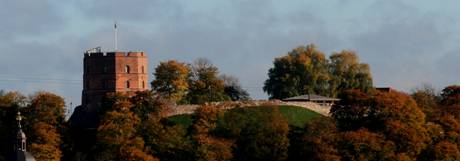
Autumn in Vilnius. Gediminas Tower, October 2011.
Photo: Aage Myhre.
And we in VilNews celebrate the autumn by introducing new Sections! Click the buttons 3 – 8 above and see for yourself.
- Bookmark :
- Digg
- del.icio.us
- Stumbleupon
- Redit it
- Posted by - (0) Comment
Russia has ambitions
few in the west
are aware of
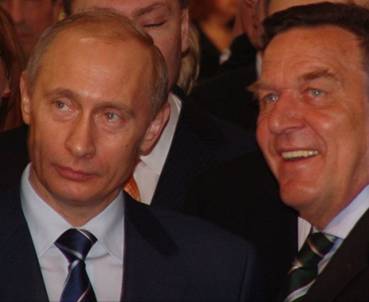
Vladimir Putin and Gerhard Schröder.
Photo: Wikipedia.org.
Text: Aage Myhre
Editor-in-Chief
aage.myhre@vilnews.com
Professor Vytautas Landsbergis continuously warns his country and the world about the Russian threat. I think these warnings sometimes are a bit excessive, but I’m also afraid that Western Europe will continue acting and thinking with their blinders and ear flaps on. Yeltsin's Russia was perhaps more or less loose tooth, but Putin's Russia is definitely not! And Putin has ambitions. Big ambitions. I have learned this over my years in his front yard. It surprises me constantly to see how little Western leaders worry.
Putin has publicly stated that the dissolution of the Soviet Union was the most tragic has happened in Russia's history. It is an attitude not only Eastern Europe should be scared of. Western Europe and the rest of the world will also be greatly influenced if Putin gets what he wants.
Energy is the weapon. This applies not least to gas, which the rest of Europe is highly dependent on. The state-owned Russian gas company Gazprom is Putin's main tool in the efforts to achieve more and more control in Europe. It is often through this company that many spies and agents are paid.
Baltic states are particularly vulnerable. These relatively poor countries are already paying 50% more for gas received from Russia than Germany does. And every time they do something to achieve independence from Russian supplies of gas, oil or electricity, Putin is ready with the finger on the switch. Ready to turn off the power, once again to make a blow to the Baltic States. Unfortunately, he has more than enough power to threaten and trump through most of the restrictions.
I put big question marks at Germany's former chancellor, Gerhard Schröder, for his roles in his native country and for Europe. Schröder cultivated very close ties to Putin, even as Chancellor, ostensibly to strengthen the "strategic partnership" between Berlin and Moscow.
Together they planned the now realized gas pipeline under the Baltic Sea, exclusively between Russia and Germany. Only a few days before he resigned as Chancellor Schröder signed the agreement without consulting with his EU counterparts, and immediately after his retirement he joined the board of the German-Russian joint venture.
- Bookmark :
- Digg
- del.icio.us
- Stumbleupon
- Redit it
- Posted by - (1) Comment
Russia has ambitions
few in the west
are aware of

Vladimir Putin and Gerhard Schröder.
Photo: Wikipedia.org.
Text: Aage Myhre
Editor-in-Chief
aage.myhre@vilnews.com
Professor Vytautas Landsbergis continuously warns his country and the world about the Russian threat. I think these warnings sometimes are a bit excessive, but I’m also afraid that Western Europe will continue acting and thinking with their blinders and ear flaps on. Yeltsin's Russia was perhaps more or less loose tooth, but Putin's Russia is definitely not! And Putin has ambitions. Big ambitions. I have learned this over my years in his front yard. It surprises me constantly to see how little Western leaders worry.
Putin has publicly stated that the dissolution of the Soviet Union was the most tragic has happened in Russia's history. It is an attitude not only Eastern Europe should be scared of. Western Europe and the rest of the world will also be greatly influenced if Putin gets what he wants.
Energy is the weapon. This applies not least to gas, which the rest of Europe is highly dependent on. The state-owned Russian gas company Gazprom is Putin's main tool in the efforts to achieve more and more control in Europe. It is often through this company that many spies and agents are paid.
Baltic states are particularly vulnerable. These relatively poor countries are already paying 50% more for gas received from Russia than Germany does. And every time they do something to achieve independence from Russian supplies of gas, oil or electricity, Putin is ready with the finger on the switch. Ready to turn off the power, once again to make a blow to the Baltic States. Unfortunately, he has more than enough power to threaten and trump through most of the restrictions.
I put big question marks at Germany's former chancellor, Gerhard Schröder, for his roles in his native country and for Europe. Schröder cultivated very close ties to Putin, even as Chancellor, ostensibly to strengthen the "strategic partnership" between Berlin and Moscow.
Together they planned the now realized gas pipeline under the Baltic Sea, exclusively between Russia and Germany. Only a few days before he resigned as Chancellor Schröder signed the agreement without consulting with his EU counterparts, and immediately after his retirement he joined the board of the German-Russian joint venture.
Schröder was criticized in the media, and later by Germany's new chancellor, Angela Merkel, when he called Putin
a "flawless democrat 'on 22 November 2004. His so-called objectivity of years as chancellor may well be questioned.
In his memoirs' Entscheidungen: Mein Leben in der Politik ' Schröder defends his friend and ally, Vladimir Putin, saying that' it would be wrong to place excessive demands on Russia in terms of domestic political reform and democratic development, or to condemn Russia solely on basis of the Chechnya conflict '. Well ...
Schroeder has also criticized some European countries' rapid decision to recognize Kosovo as an independent state after the independence declaration in February 2008. He believes the decision was taken under strong pressure from the U.S. government, and has caused several problems, including weakening of the so-called pro-European powers in Serbia. In August 2008, Schroeder blamed the war between South Ossetia and Georgia entirely on Mikhail Saakashvili and 'the West'.
The former chancellor still refuses to criticize any aspect of Russian politics. His office in Moscow is probably too good to be left. Then rather forget some moral principles.
Gas is crucially important for continental Europe. Even a brief interruption in supplies do often get very serious consequences. People freeze to death. Radiators and kitchen stoves are left cold. Companies are forced to stop their production.
Russia is increasing its grip on oil and gas, Europe's economic lifeblood. Moscow is working out of a comprehensive strategies aiming to increase Europe's political and economic dependence on Russian energy.
Such dependence can negatively affect transatlantic relations, common values, goals, strategic objectives and security policies. Without dialogue and coordination between Washington and European capitals, Europe's strategic plans are driven away from the United States unabated. It is consistent with Putin's plans.
Norway is an important alternative gas supplier to the European market. Therefore, for Putin and Medvedev, it is important to have good relations with Norway, among other things, to show 'courtesy' about sharing the lines in the Barents Sea and potential Norwegian participation in exploration and production of gas and oil on Russian territory.
Hopefully, Norway and Europe will understand the picture in time.

A new, disturbing aspect is that Russia now has plans to build two nuclear power plants in the Baltic States, one in the Russian enclave of Kaliningrad, and another as a joint Russian-Belarusian project in Belarus near the Lithuanian border. Europe needs more energy, but with Chernobyl and Soviet history with nuclear power plants and nuclear waste in mind, one can ask whether two new plants at the very threshold of Northern Europe and Scandinavia is desirable.
I call for clearer information and a more open debate.
- Bookmark :
- Digg
- del.icio.us
- Stumbleupon
- Redit it
- Posted by - (0) Comment
Non-Jewish witnesses to
Holocaust in Lithuania?
Washington, D.C. – The United States Holocaust Memorial Museum is looking for people to share their experiences of life in Lithuania during World War II and the Holocaust. Ina Navazelskis of the Museum’s Oral History Branch is particularly interested in speaking with non-Jewish Lithuanian witnesses to the Holocaust who now live in the U.S. or Canada.
“If you have a story to tell, or know somebody who does,” Navazelskis told VilNews, “I hope you’ll contact me. I want to hear your story and how it intersects with the Holocaust.”
- Bookmark :
- Digg
- del.icio.us
- Stumbleupon
- Redit it
- Posted by - (1) Comment
Non-Jewish witnesses to
Holocaust in Lithuania?
Washington, D.C. – The United States Holocaust Memorial Museum is looking for people to share their experiences of life in Lithuania during World War II and the Holocaust. Ina Navazelskis of the Museum’s Oral History Branch is particularly interested in speaking with non-Jewish Lithuanian witnesses to the Holocaust who now live in the U.S. or Canada.
“If you have a story to tell, or know somebody who does,” Navazelskis told VilNews, “I hope you’ll contact me. I want to hear your story and how it intersects with the Holocaust.”
Navazelskis can be reached at inavazelskis@ushmm.org.

The U.S. Holocaust Memorial Museum is seeking people to talk to about the Holocaust in Lithuania.
This advertisement was placed in the Lithuanian-language magazine Draugas, published in Chicago.
As a result of outreach efforts by the museum, people are coming forward to tell stories that have never before been told. “They say, ‘I don’t want to go to my grave without sharing what I saw,’” Navazelskis said.
Navazelskis wants to know not only what people saw, but also who they were and what their world was like. “This will help us recapture a lost part of history,” she said. Since many of the direct witnesses have died, “this is the eleventh hour.”
“Maybe you saw a hidden Jewish child,” she said, “or knew Jewish students at your school who disappeared. Maybe you know of someone who helped to rescue Jews, or can tell us what people in your town had to say about what was happening to those who were deemed to be enemies of the Third Reich.”
Navazelskis wants to hear about deportations, looting of Jewish property, public reaction to the events of the Nazi occupation. She wants to learn how events were portrayed in newspapers, newsreels, radio broadcasts, and posters.
Interviewees have been tape-recorded or filmed in Europe, Israel, and North America. They range from ordinary citizens to public figures.
Marcelijus Martinaitis recounted that he was five years old and riding in a wagon with his father when he saw Jews being driven into the forest to be shot. His father covered his eyes, but he heard the screams of the victims.
Algimantas Gureckas, a former leader of the Lithuanian World Community, an émigré organization, recalled working in a ration card office in Panevezys, where he met scores of local citizens every day. He testified about how local people reacted on the day when the Jews of the city were shot.
Ada Gens offered testimony about her Lithuanian mother and her father, Jacob Gens, who headed the Jewish community within the Vilna Ghetto. She spoke of her father’s negotiations with the Nazi command of the ghetto and of his death at the hands of the Gestapo.
The late Laimonas Noreika testified that he was working in an orchard near the Ninth Fort, the notorious killing site near Kaunas, when a soldier approached and offered him a sweater because he seemed cold. Horrified, he realized the sweater must belong to a Jew who had been murdered at the fort.
The museum’s oral history archive contains more than 12,000 audio and video interviews. The collection is open to the public and will preserve these stories for future generations
To reach Ina Navazelskis, write to her at inavazelskis@ushmm.org.

Ellen Cassedy traces her Jewish family roots to Rokiskis and Siauliai. Her book, We Are Here: Memories of the Lithuanian Holocaust, will be published in March of 2012. She lives in Washington, D.C. Visit her website at www.ellencassedy.com.
- Bookmark :
- Digg
- del.icio.us
- Stumbleupon
- Redit it
- Posted by - (0) Comment
Reflections from Dainų Šventė
“Funk and dance,
not folk song, is our life,
our lifestyle”

Breakdancer executing a one-handed spin to the song Jump
Around by House of Pain in Kalnu Parkas, Vilnius,
on the opening night of Dainų Šventė, 2009
Text: Emily Šaras
Associate Editor
It was a misty and moist afternoon in the summer of 2009, a year that celebrated Vilnius, Lithuania as a European Capital of Culture. Just as eager as I was sleep-deprived, I started my ethnomusicology research project that night by observing the opening Dainų Šventė event. My particular strain of jet lag – the seven-hour difference between Vilnius and Boston – was still a haunting presence, leading me to wander zombie-like throughout the streets of Senamiestis that evening. But even in my undead state, I was on a mission: like the hundreds of Lithuanians gathered in the city center, I had come to the opening night festivities of Dainų Šventė to hear my first taste of Lithuanian dainos (folk music) performed live. A hedgehog in the fog, I sought musical truth to clear out my haze.
- Bookmark :
- Digg
- del.icio.us
- Stumbleupon
- Redit it
- Posted by - (1) Comment
Reflections from Dainų Šventė
“Funk and dance, not folk song,
is our life, our lifestyle”

Breakdancer executing a one-handed spin to the song Jump
Around by House of Pain in Kalnu Parkas, Vilnius,
on the opening night of Dainų Šventė, 2009
Text: Emily Šaras
Associate Editor
It was a misty and moist afternoon in the summer of 2009, a year that celebrated Vilnius, Lithuania as a European Capital of Culture. Just as eager as I was sleep-deprived, I started my ethnomusicology research project that night by observing the opening Dainų Šventė event. My particular strain of jet lag – the seven-hour difference between Vilnius and Boston – was still a haunting presence, leading me to wander zombie-like throughout the streets of Senamiestis that evening. But even in my undead state, I was on a mission: like the hundreds of Lithuanians gathered in the city center, I had come to the opening night festivities of Dainų Šventė to hear my first taste of Lithuanian dainos (folk music) performed live. A hedgehog in the fog, I sought musical truth to clear out my haze.
By the early evening hours, dozens of benches were already full with an audience of all ages. The concept that these strangers would gather in Katedros Aikštė to unabashedly and publicly sing together astounded me. As a classical singer, I have become accustomed to performing solo on a stage, separated from my audience. Yet these patient Lithuanians sang along to a recording of “Ant Kalno Mūrai,” with lyrics projected on a large video screen like a large, nationalist karaoke party. Was this the authentic Lithuania my grandfather, a refugee during the Soviet Occupation in the late 1930s, had described in the stories he told me when I was a child? Perhaps, I thought, but with some newfangled technology involved. For a moment, I believed in the homogeneity of the spectacle.
Yet before the choirs began to sing for both the live audience and the thousands of Lithuanian viewers glued to their television sets at home, I broke away from the crowd in the event seating area to follow a curious sound that reminded me of home – a saxophone. Keeping an eye on the growing masses behind me, I walked about a hundred yards away from the crowd into Kalnų Parkas, the wooded, hilly area behind the city’s famous cathedral. There, I found the boom-box, the break dance mat, and eleven twenty-somethings jamming to what suddenly sounded so exotic against the folk backdrop: funk music.
The troupe members rotated on and off the mat, contorting their bodies into spinning shapes. They smiled, breathed excitedly and hummed along with the distorted saxophone melody line. Intrigued, I pulled the leader of the troupe aside for an interview. I was quite curious as to why they were dancing to funk under the trees instead of singing at the national festival in the square. Folk music, after all, is defined as the music of the people.
The young man took a pause, and a long drag of his joint before offering me a hit. Disappointed at my refusal (some American I am), he motioned back to growing the crowds and shook his head. Over there, he explained to me, was not the music he identified with. “Funk and dance, not folk song, is our life, our lifestyle…Funk is our music.” Such a simple but poignant statement shocked me. It was only away from all of the media publicity surrounding Capital of Culture 2009 events that I had come into contact with artists my age whose musical identities are on the blurred margins of Lithuanian musical culture. And just like that, he jumped back on the mat and threw his body into a spin.
Pluralism persisted right there in front of me, even on the night all Lithuanians were supposed to come together in unified song. All of a sudden, I understood the night’s haze in a different light: there was beauty in this newfound blur between musical genres. Towards the end of the concert, the orchestra began the finale with a pop song. “Kaip gyveni? Gerai!” (How are you? Great!) sang the audience members as two of them grabbed my hands and shook them in the air. We had never spoken to each other before, and yet all of us were dancing together, sharing in a friendly moment in which even I, the American outsider, felt included and welcomed.
That night in the fog, I threw away my search for the authentic and started to study music that crosses and blurs the borders of society. I could not clearly define the evening’s particular mix of music, but it was clear that the heterogeneity and the haziness were the definitive parts of us all coming together. People from all over the world are connected to the small city of Vilnius, and diversity and pluralism at the core of this country’s ancient history. My experiences that foggy night are reflections of that truth. Music has the power to connect our voices and bring us into musical and emotional harmony with one another. Perhaps this spirit of connection offers us a viewpoint that looks beyond our “norms” to see the value of the music, art, and culture within margins of our community.
- Bookmark :
- Digg
- del.icio.us
- Stumbleupon
- Redit it
- Posted by - (0) Comment
Lithuania’s friends
and brothers

Soviet propaganda poster during the winter
war with Finland, 1939-1940.
From Wikipedia.org.
“Do you know how we Fins look upon the Russians as brothers or friends?” A Finnish friend of mine asked, and soon he revealed the answer: “We consider them our brothers, of course, because friends you can choose yourself.”
Lithuania of today is facing the problem Finland has had to deal with for many decades, and is now learning the art of keeping close ties to the West without irritating Russia too much. But Lithuania has got many more “friendship dimensions” to tackle; to keep up the mood towards the EU and to balance its relations between America and Western Europe.
Many would even say that it is questionable who are the real friends of Lithuania within Lithuania itself, or as a columnist recently wrote on this issue: “All these scandals and infights among politicians are no more than battles of personal interests which have very little if anything to do with interests of the nation.”
But first back to Russia, where a recent poll gives quite interesting information on how ordinary Russians view the relations with other countries. According to the poll, Russia's best friends are Belarus (47 percent), Kazakhstan (33 percent), China (24 percent), Germany (22 percent) and India (15 percent).
Russia's main foes are Latvia (46 percent), Georgia (44 percent), Lithuania (42 percent), the United States (37 percent), Estonia (28 per cent) and Ukraine (27 percent).
Lithuania is, in other words, considered one of Russia‘s top foes.
- Bookmark :
- Digg
- del.icio.us
- Stumbleupon
- Redit it
- Posted by - (2) Comment
Lithuania’s friends and brothers

Soviet propaganda poster during the winter
war with Finland, 1939-1940.
From Wikipedia.org.
“Do you know how we Fins look upon the Russians as brothers or friends?” A Finnish friend of mine asked, and soon he revealed the answer: “We consider them our brothers, of course, because friends you can choose yourself.”
Lithuania of today is facing the problem Finland has had to deal with for many decades, and is now learning the art of keeping close ties to the West without irritating Russia too much. But Lithuania has got many more “friendship dimensions” to tackle; to keep up the mood towards the EU and to balance its relations between America and Western Europe.
Many would even say that it is questionable who are the real friends of Lithuania within Lithuania itself, or as a columnist recently wrote on this issue: “All these scandals and infights among politicians are no more than battles of personal interests which have very little if anything to do with interests of the nation.”
But first back to Russia, where a recent poll gives quite interesting information on how ordinary Russians view the relations with other countries. According to the poll, Russia's best friends are Belarus (47 percent), Kazakhstan (33 percent), China (24 percent), Germany (22 percent) and India (15 percent).
Russia's main foes are Latvia (46 percent), Georgia (44 percent), Lithuania (42 percent), the United States (37 percent), Estonia (28 per cent) and Ukraine (27 percent).
Lithuania is, in other words, considered one of Russia‘s top foes.
As for Russo-US relations, Russia has the last 20 years been happy to have had relatively good ties with Uncle Sam. However, Putin's and Medvedev’s version of democracy is regarded by the United States as a slide towards totalitarianism.
Simultaneously, Russia is trying to improve its ‘security situations’. Around its eastern regions this is being done by establishing and strengthening a number of bilateral and multilateral partnerships, including strengthening Russo-Chinese strategic cooperative partnership, developing Russo-Indian ties and improving Russo-Japanese relations.
What Russia is doing to improve its ‘security situation’ with the Baltic States remains not always too clear, but a top Lithuanian politician told me recently that Russia now has more than 300 agents here, all trying to infiltrate and influence political changes as well as economy and other spheres, ready to ‘invest’ into areas where they see weaknesses in the Lithuanian economy, society and political life that could give Moscow some advantages by seeding discord.
We described recently how the big powers France, Germany, Poland, and Russia now seem to be moving into a better climate of cooperation among themselves. We suggested in this context that Lithuania and the other Baltic States once again could become victims of the great powers' actions, and we recommended a much closer cooperation with the Nordic countries (Scandinavia) as the best and safest solution for Lithuania, Latvia and Estonia in the future.
The Baltic countries should, in my opinion, cooperate closely on a common approach to Scandinavia, and they should do their utmost to become independent of gas, oil and electricity from Russia – as soon as possible.
Lithuania already pays 50% more for gas bought from Gazprom than what Germany pays for the same gas, and there is little doubt that Russia is doing everything possible to prevent the Baltic States from developing their own energy sources. Russia has already taken a number of worrisome, significant steps to maintain and enhance its energy monopoly here.
The Baltic States may soon be even more squeezed and caught in a trap if the Nordic countries and the EU do not do more to help in achieving a much higher degree of independence from Russian energy.
It’s good to have brothers. Friends are sometimes even better.
Aage Myhre, Editor-in-Chief
- Bookmark :
- Digg
- del.icio.us
- Stumbleupon
- Redit it
- Posted by - (0) Comment
First and second round of Lithuanian Litas
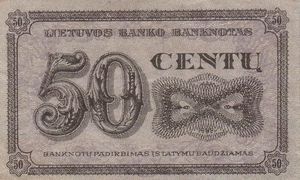
Front and back of 1922, 50 Centai banknote.
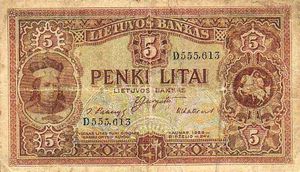
Front and back of 1929, 5 Litai banknote.
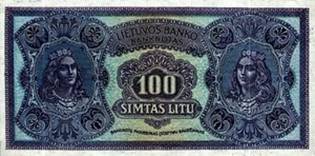
Front and back of 1922, 100 Litai banknote.
Photos courtesy of Colnect.
Auksinas
to Russian Ruble
to Ostmark and Ostruble
to Litas
to Soviet Ruble
to Litas
– the first and second introduction of the Lithuanian Litas
The official currency of the Republic of Lithuania is the Litas. Twice it has been the official currency. The first period was during the inter-war years when Lithuania regained its independence from Imperial Russia and the second period began in 1993, after Lithuania regained its independence from Soviet Russia, and is still the official currency. We would like to share with you some interesting information about what was involved in the creation of the Litas and its reintroduction.
- Bookmark :
- Digg
- del.icio.us
- Stumbleupon
- Redit it
- Posted by - (4) Comment
First and second round
of Lithuanian Litas

Front and back of 1922, 50 Centai banknote.

Front and back of 1929, 5 Litai banknote.

Front and back of 1922, 100 Litai banknote.
Photos courtesy of Colnect.
AUKSINAS to RUSSIAN RUBLE to OSTMARK and OSTRUBLE to LITAS to SOVIET RUBLE to LITAS – THE FIRST and SECOND INTRODUCTION of the LITHUANIAN LITAS
The official currency of the Republic of Lithuania is the Litas. Twice it has been the official currency. The first period was during the inter-war years when Lithuania regained its independence from Imperial Russia and the second period began in 1993, after Lithuania regained its independence from Soviet Russia, and is still the official currency. We would like to share with you some interesting information about what was involved in the creation of the Litas and its reintroduction.
FIRST LITAS, 1922-1941
HISTORY
The first litas was introduced on 2 October 1922 to replace the German Ostmark and Ostruble, both of which had been issued by the occupying German forces during World War I. Interestingly the ostmark was known as the auksinas in Lithuania as the auksinas was the currency of Lithuania in the 17th century. Before the German Ostmark and Ostruble the currency used in Lithuania was the Russian Ruble as it was occupied by Imperial Russia.


Auksinas coin Russian ruble
Ostmark was the name given to a currency denominated in Mark which was issued by Germany in 1918 for use in a part of the eastern areas under German control at that time known as the Ober Ost area. This area included Lithuania, Latvia, Estonia, Belarus, parts of Poland and Courland, which were former territories of the Russian Empire.
The currency consisted of paper money issued on 4 April 1918 by the ‘Darlehnskasse’ in Kaunas and was equal to the German Papiermark. The Ostmark circulated alongside the Russian ruble and the Ostruble, with two Ostmarks equal to one Ostruble.
Ostruble was the name given to a currency denominated in kopeck and ruble, which was issued by Germany in 1916 for use in the Ober Ost area under German occupation and the Government General of Warsaw). It was initially equal to the Russian ruble. The reason for the issue was a shortage of rubles. The banknotes were produced by the "Darlehnskasse" in Posen (now Poznan) on 17 April 1916. From 4 April 1918, the Ostruble circulated alongside the Ostmark in the Ober Ost area. It was valued at 2 Ostmarks = 1 Ostruble. In the Government General of Warsaw the Ostruble was replaced by the Polish marka on 14 April 1917.
The intitial vale of the Litas was established at a value of 10 litas = 1 US dollar and was subdivided into 100 centai. Even with the world wide economic depression, the litas was quite a strong and stable currency, reflecting the negligible influence of the depression on the Lithuanian economy. One litas was covered by 0.150462 grams of gold stored by the Bank of Lithuania in foreign countries. In March 1923, the circulation amounted to 39,412,984 litai, backed by 15,738,964 in actual gold and by 24,000,000 in high exchange securities. It was required that at least one third of the total circulation would be covered by gold and the rest by other assets. By 1938, 1 U.S. dollar was worth about 5.9 litai, falling to about 20 U.S. cents just before its disappearance in 1941 following Soviet Russia’s invasion and occupation of Lithuania.
After Lithuania was annexed by the Soviet Union the litas was replaced by the Soviet ruble with 1 litas equal to 0.9 ruble. The actual “street value” though of the litas was about 3-5 rubles. Such an exchange rate provided great profits for the military and party officials. Trying to protect the value of the currency, people started to massively buy. This combined with a downfall in production caused by Moscow’s nationalization of all private businesses and industry resulted in severe shortages of many items. Withdrawals were then limited to 250 litai before the litas was completely abolished.
COINS
Coins were introduced in 1925 in denominations of 1, 2, 5, 10, 20 and 50 centai and 1, 2 and 5 litai, with the litas coins of silver. These coins replaced the banknotes of corresponding value. 10 litų coins were introduced in 1936. All these coins were designed by the famous sculptor Juozas Zikaras (1881-1944). The litas coins displayed Jonas Basanavičius and Vytautas the Great, which was replaced by a portrait of President Antanas Smetona.


Interwar 10 litas coin, depicting Vytautas the Great Interwar 10 litas coin, depicting Antanas Smetona
BANKNOTES
In 1922, the Bank of Lithuania issued notes in denominations of 1, 2, 5, 10, 20 and 50 centai, 1, 2, 5, 10, 50 and 100 litų. In 1924, 500 and 1000 litai notes were added. Banknotes below 5 litai were replaced by coins in 1925.


Front and back of 1922, 50 Centai banknote – Photos courtesy of Colnect


Front and back of 1929, 5 Litai banknote – Photos courtesy of Colnect


Front and back of 1922, 100 Litai banknote – Photos courtesy of Colnect
1993 - THE SECOND LITAS
In the previous article, we talked about Lithuania’s transition from the Soviet Ruble to the Talonas after independence was regained in 1990. The litas once again became Lithuania's currency on June 25, 1993, when it replaced the temporary Talonas currency at a rate of 1 litas to 100 talonas. You may find it interesting that officials had started to prepare for the introduction of the litas even before independence was declared. What is even more interesting is that it was even considered to introduce the litas alongside the ruble even if Lithuania remained a part of the Soviet Union. In December 1989, artists were asked to submit sketches of possible coin and banknote designs. Also, a list of famous people was compiled in order to determine who should be featured.
The Bank of Lithuania was established on March 1, 1990. Ten days later Lithuania declared independence. At first the Lithuanian government negotiated in vain with the famous French printing house Imprimerie Oberthür to print the banknotes. In November 1990 The Bank of Lithuania decided to work with the United States Banknote Corporation (now American Banknote Corporation). In late fall of 1991 the first shipments of litas banknotes and coins arrived in Lithuania.
In November 1991, the Currency Issue Law was passed and the Litas Committee was created. It had the power to fix the date for the litas to come into circulation, the terms for the withdrawal from circulation of the ruble, the exchange rate of the litas and other conditions. Officials waited for a while for the economy to stabilize to not to expose the young litas to inflation. About 80% of Lithuania's trade was with Russia and the government needed to find a way to smooth the transition from the ruble zone. Also, Lithuania needed to gather funds to form a stabilization fund.
GATHERING FUNDS
At first, Lithuania did not have gold or any other securities to back up the litas. Lithuania needed to find about 200 million U.S. dollars to form the stabilization fund. First, it sought to recover its pre-war gold reserves (about 10 tons) from France, United Kingdom, Switzerland, etc. In the interwar period Lithuania stored its gold reserve in foreign banks. After the occupation in 1940 those reserves were “nobody’s”, there was no Lithuania and most western countries condemned the occupation as illegal and did not recognize the Soviet Union as a successor. The Bank of England, for example, sold the reserves to the Soviets in 1967. However, in January 1992 it announced that this action was a “betrayal of the people of the Baltic states” and that it would return the originally deposited amount of gold, now worth about 90 million pound sterling, to the three Baltic states. Lithuania received 18.5 million pounds or 95,000 ounces of gold and remained a customer of the bank. Similarly, in March 1992 Lithuania reclaimed gold from the Bank of France and later from the Bank of Sweden.
April 29, 1992 Lithuania joined the International Monetary Fund. In October 1992, the IMF granted the first loan of 23.05 million U.S. dollars to create the stabilization fund. However, it is estimated that at the time of the introduction of the new currency, Lithuania managed to gather only $120 million for the stabilization fund. For a brief while it was kept a secret so as not to further damage the reputation of and trust in the litas.
DELAYS INTRODUCING THE LITAS
Journalists investigating the production of the litas found that for a while it was purposely held back. For example, 6 million litas designated to pay for printing the banknotes stayed in a zero interest bearing account for a year in a bank in Sweden. By 1992, the litas was ready for introduction, but the banknotes were of extremely low quality. It was felt that one could easily counterfeit them with a simple color printer, especially the 10, 20, and 50 litai banknotes.

Early litas lacked necessary security protection
Newly elected President Algirdas Brazauskas dismissed the Chair of the Bank of Lithuania, Vilius Baldišis, for incompetence just two months before the introduction of the litas. Baldišis was later charged for negligence that cost Lithuania $3,000,000. Some even claimed that the Russian secret services were behind the affair. Baldišis’ explanation was that he was trying to cut the costs of printing the banknotes and thus did not order better security features. The “U.S. Banknote Corporation” was also accused of violation of the contract terms.
Considering all the past problems with the quality of the banknotes, you would think that with the next issue all the quality concerns would have been resolved but when the new issue of litas banknotes was redesigned, reprinted, and introduced in June 1993, it was found that the quality of the money was still too low and the banknotes would have to be redesigned further in the future. All these scandals and the small backup of gold reserve (about $120 million instead of $200 million) damaged the reputation of the litas. Thankfully, the newly appointed chair, Romualdas Visokavičius, moved things quickly and managed to win the trust of the public. Unfortunately, in October he was asked to resign mostly because of his involvement with a private bank "Litimpex."
INTRODUCTION OF THE SECOND LITAS



The 1, 2 and 5 Litai banknotes were replaced in 1998 by coins
On June 25, 1993, the litas was finally introduced at the rate of 1 litas to 100 talonas. 1 U.S. dollar was worth 4.5 litai and decreased to about 4.2 a couple of weeks later. From April 1, 1994 to February 1, 2002, the litas was officially pegged to the U.S. dollar at the rate of 4 to 1 (the litas was stable around 3.9 for half a year before the pegging). The main reasons for this fixation was little trust in the emerging monetary system, fear of high fluctuations in currency exchange rates, desire to attract foreign investors, and International Monetary Fund recommendations. The peg was renewable every year. For a while a peg was considered to a basket of currencies: the European Currency Unit. At around this time Lithuania also established a currency board.


This 4 to 1 rate remained until Lithuania became a member of the EU and then the litas was the pegged to the Euro with the official Bank of Lithuania exchange rate of 1 Euro to 3,4528 litas. Even the introduction of the litas was followed by a scandal. The government allowed the changing of unlimited amounts of talonas to the litas without having to show the source of the talonas. This allowed criminal groups to legalize their funds. Also, due to poor banknote quality (both talonas and early litas) it was easy to counterfeit them. Most shops were forced to acquire ultra violet lamps to check for forgeries. For example, it is reported that one enterprising group of counterfeiters printed 500 talonas banknotes in Turkey. It was estimated that their notes totaled 140,000 litas.


In July, circulation of the talonas was stopped and on August 1, 1993, the litas became the only legal tender. Following the reintroduction of the litas, there was an effort to weed out U.S. dollars from the market. The talonas was never really trusted by the people and the ruble was very unstable. Thus, people started using U.S. dollars as a stable currency. Another alternative was the German mark, but it was not available in larger quantities. A lot of shops printed prices in several different currencies, including dollars, and the economy was very "dollarised" as it was legal to make trades in foreign currencies.


As one final measure, from April 1, 1994, the litas was fully backed by gold and other stable securities.
THE LITAS AND THE EURO
On 2 February 2002 the litas was pegged to the euro at a rate of 3.4528 to 1. This rate is not expected to change until the litas is completely replaced by the euro. After the peg, Lithuania became a member of the Eurozone de facto. Since 28 June 2004, the litas has been part of the ERM II which is the EU's Exchange Rate Mechanism. The design of Lithuanian euro coins is already prepared.
Lithuania has postponed its euro day several times, since the country does not meet the convergence criteria. A recent analysis of SEB bankas in Lithuania says that Lithuania could not adopt the euro before 2013 due to the high rate of inflation — which reached 11% in October 2008 — well above the Maastricht criterion of 4.2%.
COINS
In 1993, coins were introduced (dated 1991) in denominations of 1, 2, 5, 10, 20 and 50 centų, 1, 2 and 5 litai. The 1, 2 and 5 centai pieces were minted in aluminium, the 10, 20 and 50 centų in bronze and the litas coins were of cupro-nickel. In 1997, nickel-brass 10, 20 and 50 centų coins were introduced, followed by cupro-nickel 1 litas and bimetallic 2 and 5 litai in 1998. All have the obverse designs showing the Coat of Arms in the center and the name of the state "Lietuva" in capital letters.

Photo courtesy of BalticValue.com
The first coins were minted in the United Kingdom. Currently, all coins are minted in the state-owned enterprise "Lithuanian Mint", which started its operations in September 1992 and helped to cut the costs of introducing the litas.
FROM LITAS TO EURO
Lithuania still waits to join the Euro Zone. While many government and business leaders are still diligently working to achieve this goal many, perhaps even the majority, of the general public is of the mind – Who needs it. While our good friends in Estonia entered the Euro Zone 1 January 2011 and everything seems to be going well for them, many in Lithuania fear that entering the Euro Zone will escalate inflation and drive prices higher. This is of great concern for the people of Lithuania given that in the past few years the prices of everything have escalated out of control with out any one in control seemingly doing anything to try to control it.
PROTECTING THE VALUE OF THE LITAS
Another concern of the Lithuanian people is how the litas would be exchanged for the Euro. I will use the exchange rates of the largest bank in Lithuania to explain this concern.
Currently if you had an account with SEB Bankas in Lithuania you could walk into one of their banking centers or log into your account via the internet and exchange litas for Euros. If the exchange is done with banknotes the buy rate would be 3.442 Litas for 1 Euro. If the exchange is done via transfer of funds from your account the buy rate would be 3.4442 Litas for 1 Euro. Given that the official Bank of Lithuania currency rate is 3.4528 Litas for 1 Euro, the difference from the buy rate to the official rate is only .0108 and .0086 centai respectfully. This difference is absolutely miniscule and nobody would complain if when the time comes that Lithuania switches to the Euro that these would be the rates of exchange. The concern many people have is that when the time comes for the exchange, since it will now be “official” that the difference between the buy rate and official rate will be increased resulting in excessive loss of value in their Litas.
So now Lithuanians wait to see if the Litas will stay in place, will the Euro take its place and if the Euro does come will the government protect their life savings by keeping the exchange rate at a very expectable level as it is now.
Su pagarbe – Vincas karnila
Associate editor
- Bookmark :
- Digg
- del.icio.us
- Stumbleupon
- Redit it
VilNews e-magazine is published in Vilnius, Lithuania. Editor-in-Chief: Mr. Aage Myhre. Inquires to the editors: editor@VilNews.com.
Code of Ethics: See Section 2 – about VilNews. VilNews is not responsible for content on external links/web pages.
HOW TO ADVERTISE IN VILNEWS.
All content is copyrighted © 2011. UAB ‘VilNews’.

 Click on the buttons to open and read each of VilNews' 18 sub-sections
Click on the buttons to open and read each of VilNews' 18 sub-sections 



























































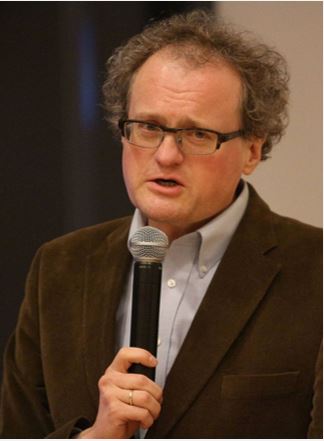
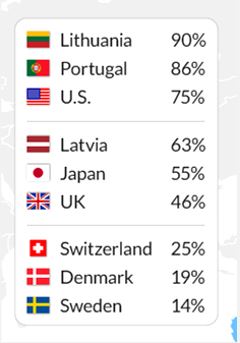
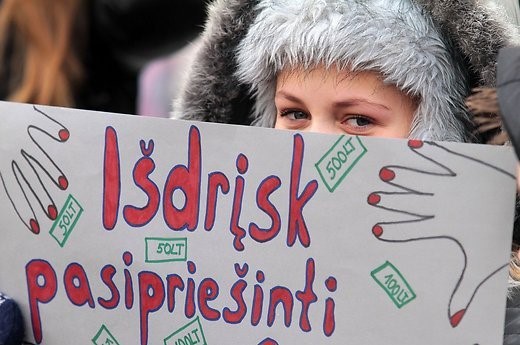


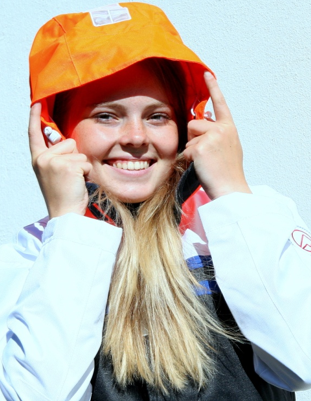
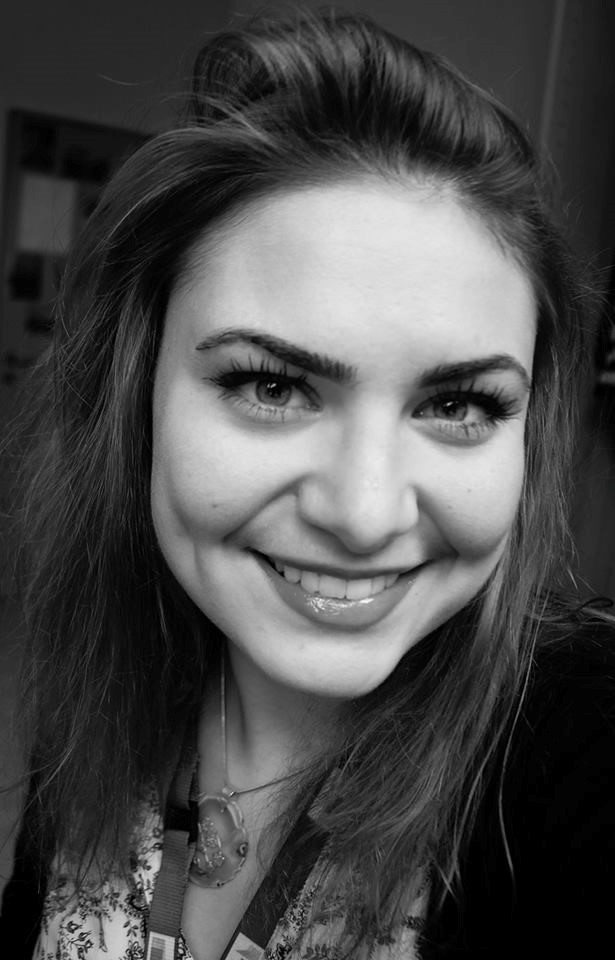
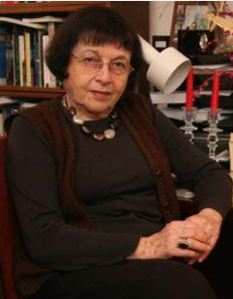
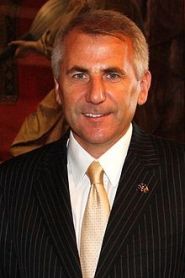
.jpg)
